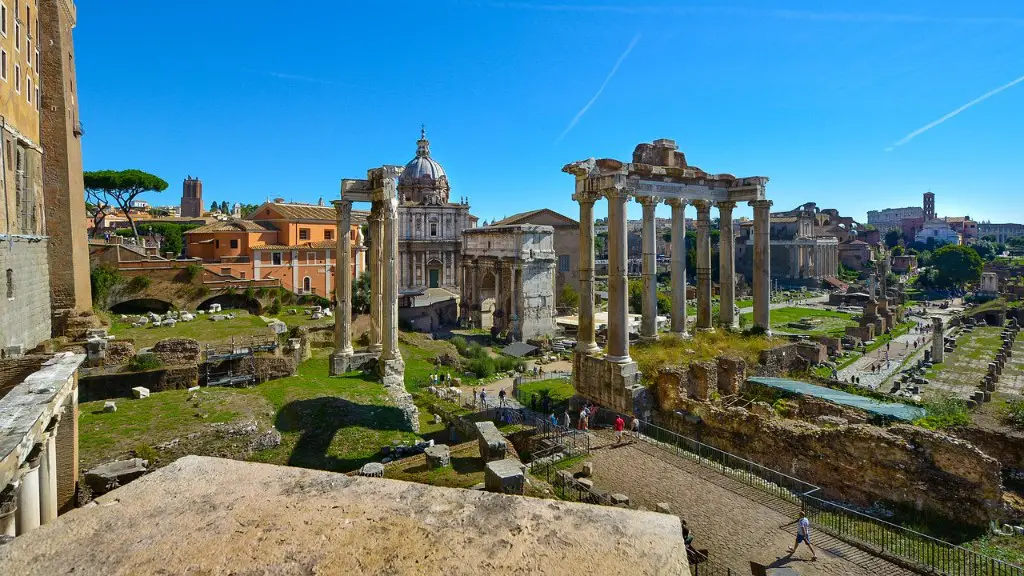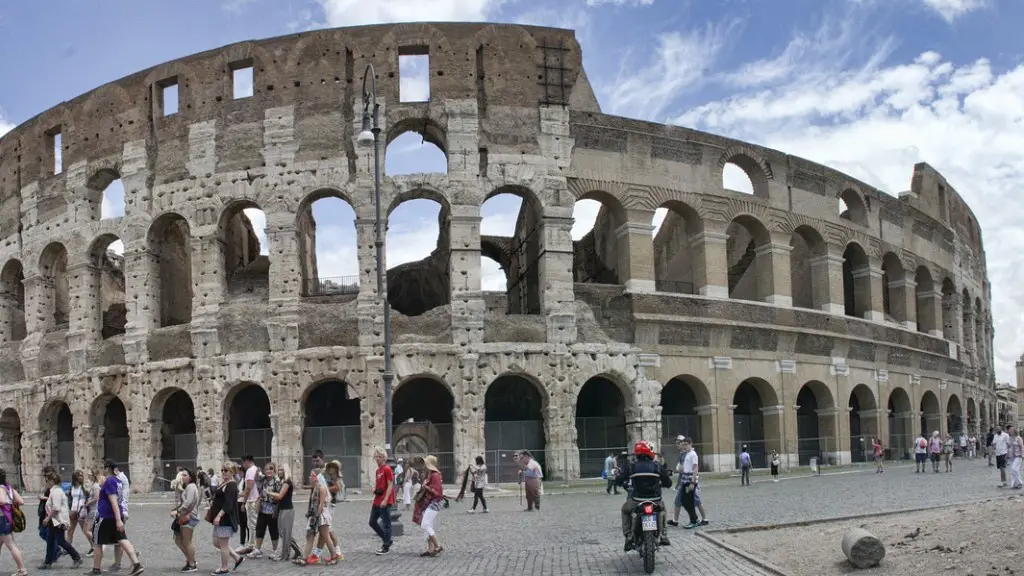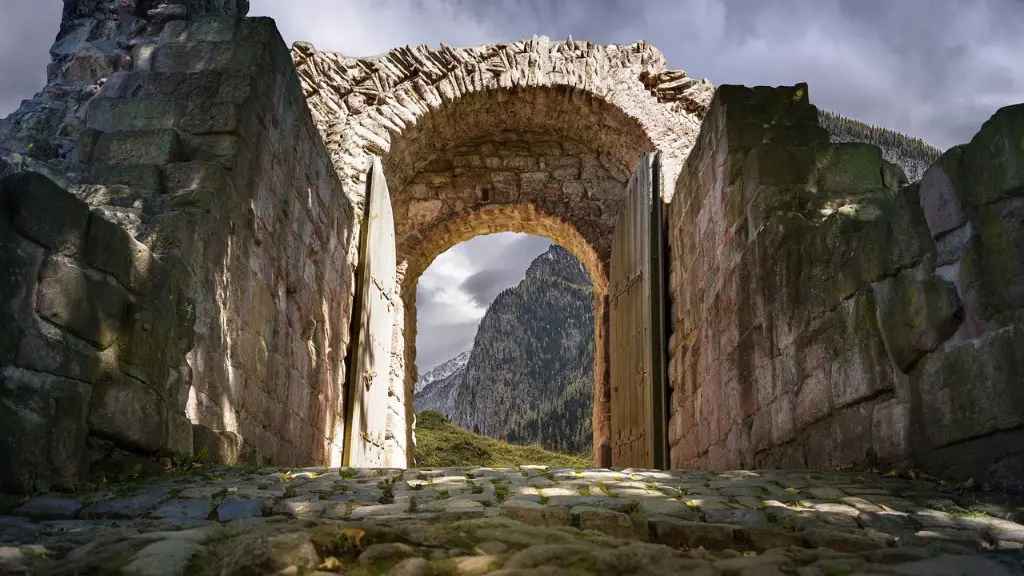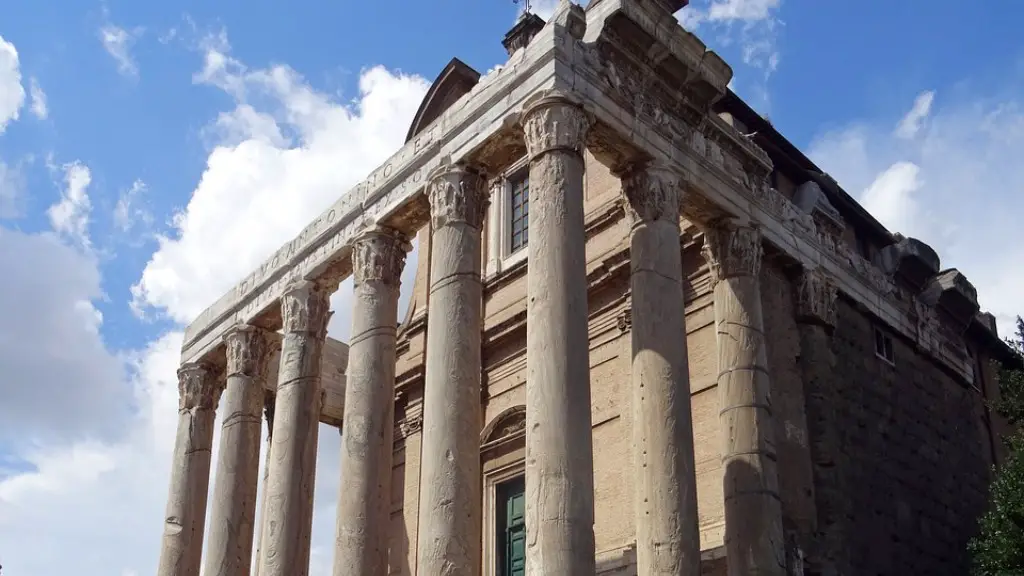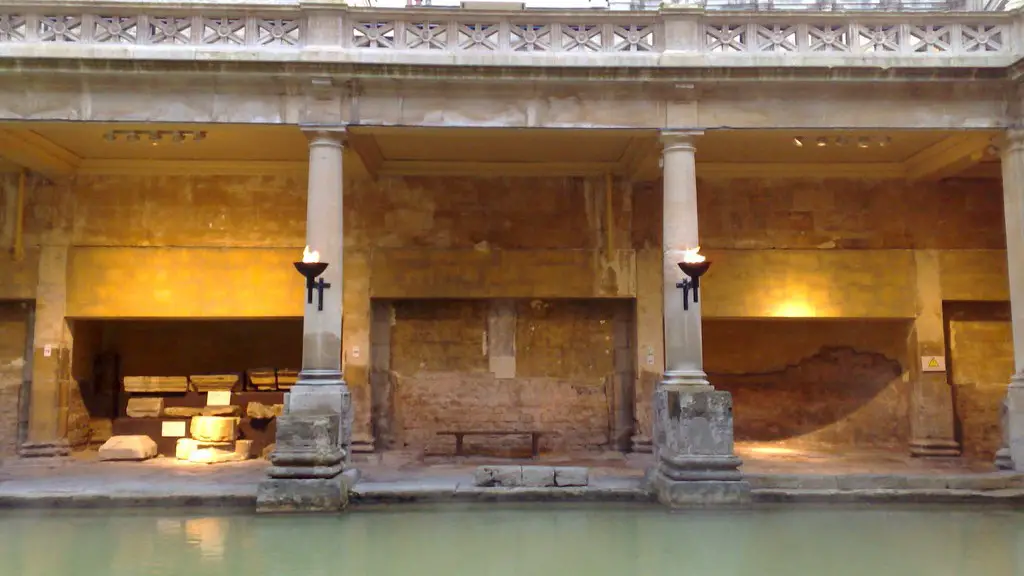Technology
Ancient Rome was a remarkable civilization in its own right, but one of the most fascinating aspects of its development was the technology it produced. Ancient Rome had a culture of inventiveness and held patents on many of its inventions, including the refinement of ironworking, advances in the army’s siege weaponry and the use of water-powered machines. Military technology was very advanced, evidenced by the number of wars won by Ancient Rome, many of which were fought in foreign terrain.
The Roman engineers also created a variety of aqueduct systems and reservoirs to irrigate the countryside, supply water to its cities and power a system of mills for grinding grain. Romans were also known to create irrigation systems and other man-made waterways for navigation. What’s more, Ancient Rome was the first civilization to construct roads on a large scale, thus facilitating the transportation of goods, people and soldiers.
In terms of leisure activities, the Romans devoted considerable resources to the development of stadiums and theaters. The Forum of Augustus, the Colosseum and the Pantheon are the most famous examples of Roman architecture, still impressive today. Roman engineers constructed public squares, theaters, churches and aqueducts, many of which remain in use today.
Trade and Economy
The economy of Ancient Rome had been driven by its expansive trade network. A number of trade routes arose and extended out of the city, forming a sophisticated logistics network that served to increase efficiency and the circulation of wealth within Rome. The widespread presence of the Roman commercial quaestors, or foreign traders, must be noted.
The Pax Romana created an environment of stability and prosperity, leading to a period of economic growth. Imperial coinage reigned supreme in Ancient Rome and the government managed to control most of the foreign exchange rate. There was considerable investment in trade and industry, especially in the provinces, where people enjoyed a wider degree of economic freedom than in the capital city.
The most interesting economic area of Ancient Rome is the financial sector. In order to finance the massive state apparatus and military, the Romans created a comprehensive monetary system that regulated the minting of coins and the trading of goods. The powerful financial institutions of Ancient Rome, as well as its tax collection apparatus, were the major factors in its sustainable economic growth.
Social Structure
Ancient Rome was a highly stratified society, especially when it came to the social classes. The class divisions revolved around the main features of the Roman citizen’s life – his or her political, economic and military standing. The highest social class was composed of the patricians,who had the highest political power within the state and traditionally dominated the positions of political, military and judicial authority. The equites, a class of wealthy citizens, also had political, commercial and financial influence.
At the bottom of the social ladder, were the plebians, who were not entitled to the same political rights as the higher classes. The majority of the population were the working classes, the slaves who, though not part of the social hierarchy, still held an important role in society.
Despite the rigid social hierarchy, Ancient Rome was in many ways much more egalitarian than other civilizations of its time. Women, children and slaves all had certain rights that were not always present in other empires. Women, in particular, enjoyed a degree of freedom much greater than that enjoyed by their contemporaries in the Eastern world.
Legal System
The Romans developed a legal system that was based on their own customs and traditions. Roman law was codified into a document known as the Twelve Tables, which was a major feature of the development of Roman legal culture. This law was regularly used to resolve social disputes, decide boundary issues and settle commercial disputes. Thanks to its highly developed legal code and well-organized court system, Ancient Rome had one of the most reliable legal systems in the world.
The Roman legal system was very advanced compared to other societies in the ancient world. It featured many of the same principles found in later regimes and was one of the major influences on modern civil law. It was also the first system to recognize individual rights, a core component of any democratic society. Roman law also set the legal protection of women, children, slaves and non-Roman citizens, a major step forward in protecting the rights of minority groups.
Culture
Ancient Rome was known for its culture and art. Rome’s immense importance rests on its incomparable cultural legacy, which includes its distinctive language, literature, art and architecture. Roman civilization created monumental works of art, including sculptures and architecture. The Pantheon, the Colosseum and the Forum of Augustus are some of the most outstanding monuments created during the Roman period. Rome also produced a great deal of literature, often in Latin, from some of the most famous works in history.
Roman culture was also well-known for its intellectual achievements. Rome was home to some of the greatest minds in history, including Julius Caesar, Cicero and Virgil, who all made significant contributions to the development of art and culture. The Roman education system was quite comprehensive and the learning of languages, philosophy, rhetoric and poetry was highly advanced. Roman culture is also remembered for its traditions and beliefs, including its polytheistic religion and festivals.
Government
Ancient Rome had a highly organized and complex government system. The capital was governed by the Senate, which was composed of nobles and patricians. The Senate had advisory powers, while the consuls had executive powers. The state was divided into provinces, which were governed by proconsuls. The laws were made by the Senate and enforced by the Roman soldiers.
The Roman government was highly effective in its governance of the provinces, largely because it gave them autonomy and allowed the inhabitants to continue their foreign customs and practices, as long as they adhered to the main laws of the state. Roman governors were quite successful in ruling their territories, as evidenced by the excellent functioning, stability and prosperity of many of the provinces.
The strength of the Roman government was further demonstrated by its ability to deal with enemies, gather taxes and establish reward systems for citizens. Rome was also ahead of its time in terms of civil rights, allowing individuals to own property, marry one another and participate in religious ceremonies. In short, the Roman government was a powerful force that maintained Roman civilization.
